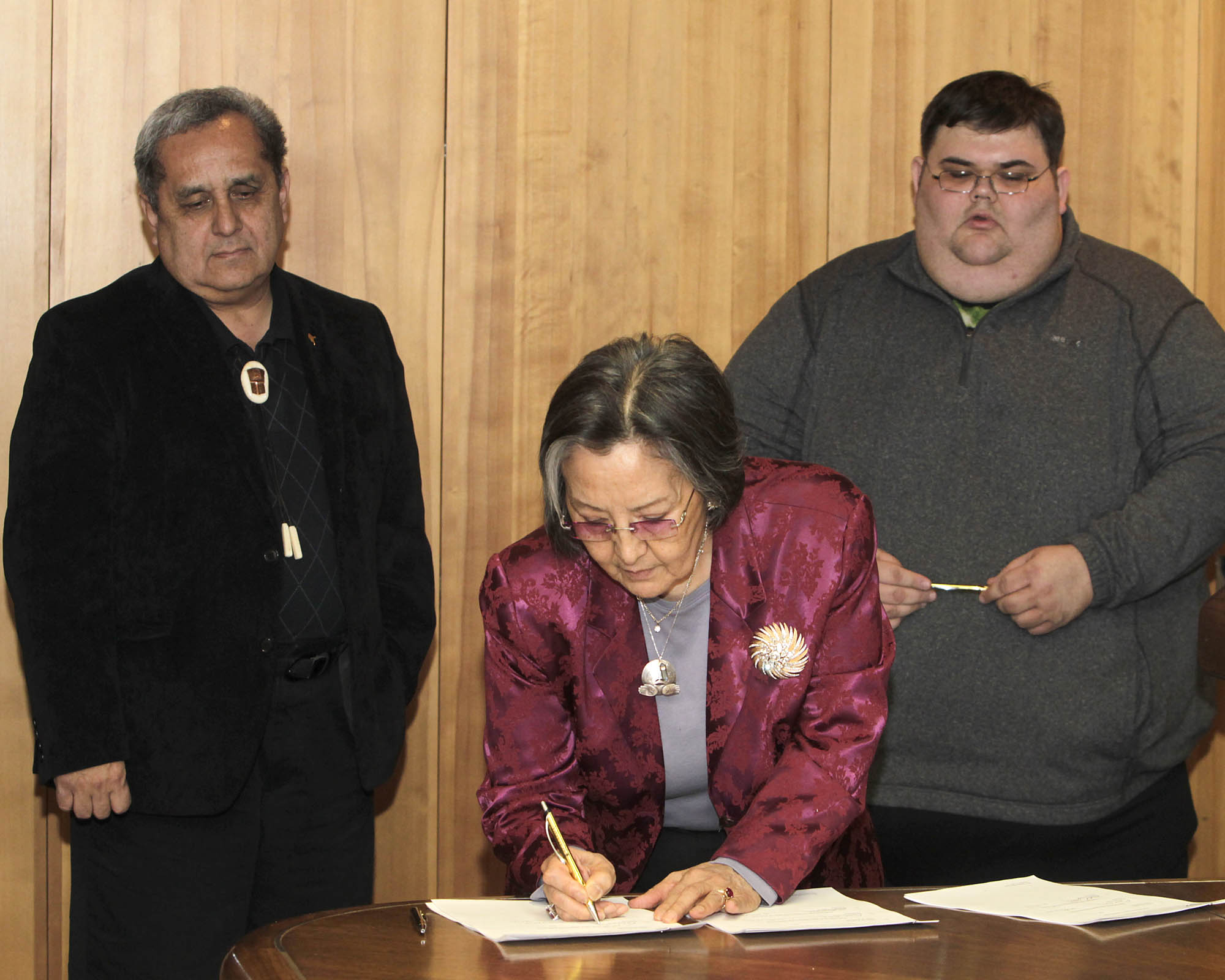
It’s the first of many agreements to be made with Southeast tribes to preserve and protect cemetery, shamanic, historic, sacred and archaeological sites within their territory, says Sealaska Board President Albert Kookesh.
Only the regional corporation has title to the lands under the 1971 Alaska Native Claims Settlement Act.
“The only choice we had as a corporation was to select those sites and to protect them ourselves,” Kookesh says. “We’re the only train left at the station. Nobody else has an entitlement in Southeast Alaska among the Native community where they could get title to these sites and protect them.”
Kookesh says the corporation and its board of directors have made a conscientious effort to identify some Sealaska economic lands as cultural sites for protection.
Under the agreement, Kasaan will work with Sealaska Heritage Institute to develop a preservation program and ensure that uses will not compromise historical and cultural integrity of the sites.
Sealaska Heritage President Rosita Worl says the most sacred thing to Native people is their land. She says the agreement will extend to lands in the Kasaan territory yet to be identified.
“It’s not only these particular historic sites, but it will be the yet undiscovered shamanic sites that we know are out there but our ancestors did not want to put on the map,” Worl says. “They did not want to put that on the map because they were fearful that people would come and desecrate those lands.”
The agreement was signed yesterday (Wednesday) by Kookesh, Worl, and Richard Peterson, president of the Organized Village of Kasaan.
Peterson says the Memorandum of Agreement between Sealaska Corporation, the Heritage Institute and Kasaan is very significant to the small tribe, and a testament that tribes and regional corporation can work together.
He says the tribe will be managing land it still uses.
“It’s important to not only mention that these are our ancestral homes, but that we still utilize these areas. Today we are still our own people,” Peterson says. “We live our lives as traditional people we still gather the foods, medicines, resources we need to survive as Haida, Tlingit, as Tshimian.”
Under ANCSA, the only way to put lands in Native ownership is through Sealaska Corporation’s remaining entitlement, or through the federal historical site program, which Worl calls a difficult process that takes years to complete.
The Sealaska Lands legislation currently before Congress includes a portion of Sealaska’s remaining entitlement to be used for cemetery and historical properties.
